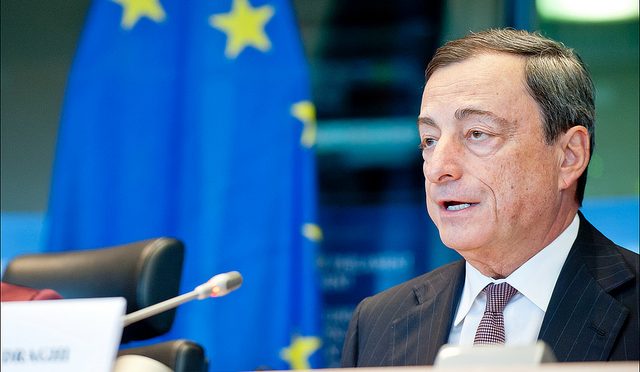
EUR Rises Ahead of Schedule
Over the year so far, the US Dollar (according to the Fed’s measurement) has lost around 7%, seeing EUR/USD shoot up to 1.18. Many investment banks and analysts had been calling for EUR/USD to reach 1.20 by year end but it now looks as though price is going to hit that level well above schedule.
Although the US Dollar is unlikely to continue its current bearish momentum, and is vulnerable to a reversal, the Euro is likely to continue higher as pension funds and insurance companies begin to increase their EUR currency exposure from current historically low levels.
Hedging Adjustments to Support EUR
In 2014 when the ECB adopted its ultra-loose monetary policy, many investors hedged not only their FX flows but their holdings of EUR denominated assets. If real money players opt to reduce their EUR hedges, this stock of EUR denominated assets should create its own dynamic supporting EUR.
EUR Nature Shifting
The nature of EUR appears to have shifted more into an asset currency, reflected by increasing FX-unhedged inflows into European Monetary Union equities with EUR rallying alongside rising global asset prices. With global growth accelerating and assets prices remaining firm the outlook for further EUR strength looks firm. However, increased EUR strength weighs on the EMU growth and inflation outlook which could push the ECB to lean back against ECB strength.
ECB To Verbally Intervene at Jackson Hole Symposium?
The Jackson Hole Symposium later this month could be the time at which the ECB opts to do this. However, it is important to point out that the current fundamental environment is different to September 2015 when Draghi verbally intervened. At that time, global growth was weakening, commodity prices were declining and capital outflows from China were in danger of forcing an unwanted deleveraging.
Risk Factors to EUR Strength
If the ECB does verbally intervene this time it will be more about buying time than effecting fundamental change in its current policy approach – as outlined by Draghi at the Sintra forum. The element which could provide a real boost for EUR is the EMU developing into a more optimal currency area. If the ECB had refrained from basing its monetary policy on its weakest link at the time (Italy) the increased credit spreads would have caused diverging fiscal and monetary policy in the eurozone, ultimately constraining capital availability within the periphery.

